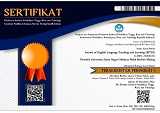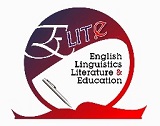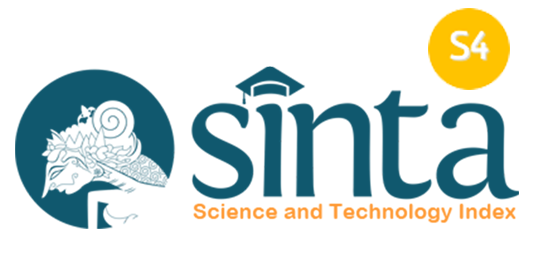Exploring the impact of time allocation on students’ writing performance: A quantitative study
Abstract
Keywords
Full Text:
PDFReferences
Alamer, A. (2022). Having a single language interest autonomously predicts L2 achievement: Addressing the predictive validity of L2 grit. System, 108, 102850. https://doi.org/10.1016/j.system.2022.102850
Alamer, A., & Alrabai, F. (2023). The causal relationship between learner motivation and language achievement: New dynamic perspective. Applied Linguistics, 44(1), 148-168. https://doi.org/10.1093/applin/amac035
Bidabadi, F. S., & Yamat, H. (2010). Learning style preferences by Iranian EFL freshman university students. Procedia: Social and Behavioral Sciences, 7(2010), 219–226. https://doi.org/10.1016/j.sbspro.2010.10.031
Biola, H. R. (1982). Time limits and topic assignments for essay tests. Research in the Teaching of English, 16(1), 97–98.
Bisriyah, M. (2022). EFL university students’ difficulties in the essay writing process. Scope : Journal of English Language Teaching, 7(1), 66. https://doi.org/10.30998/scope.v7i1.13793
Hale, G. (1992). Effects of amount of time allocated on the test of written English (Research Report No. 92–27). Princeton, NJ: Educational Testing Service.
Hirvela, A. (2017). Argumentation & second language writing: Are we missing the boat? Journal of Second Language Writing, 36, 69-74. https://doi.org/10.1016/j.jslw.2017.05.002
Horst, M., Cobb, T., & Meara, P. (1998). Beyond a clockwork orange: Acquiring second language vocabulary through reading. Reading in a Foreign Language, 11(2), 207–223.
Kavaliauskiene, G. (2003). English for specific purposes: Learners’ preferences and attitudes. Journal of Language and Learning, 1(1), 14–23.
Khuder, B., & Harwood, N. (2015). L2 writing in test and non-test situations: Process and product. Journal of Writing Research, 6(3), 233–278. https://doi.org/10.17239/jowr-2015.06.03.2
Knoch, U., & Elder, C. (2010). Validity and fairness implications of varying time conditions on a diagnostic test of academic English writing proficiency. System, 38(1), 63–74. https://doi.org/10.1016/j.system.2009.12.006
Hull, T. (2022). Timed writings to improve EFL writing skills and proficiency test scores. International Journal on Studies in English Language and Literature (IJSELL), 10, 64–72. https://doi.org/10.20431/2347-3134.1012006
Lee, S., Lim, G.S., & Basse, R. (2021). The effect of additional time on the quality of argumentation in L2 writing assessment: A mixed-methods study. Language Assessment Quarterly, 18(3), 253–272. https://doi.org/10.1080/15434303.2021.1872080
Lovett, B. J., Lewandowski, L. J., Berger, C., & Gathje, R. A. (2010). Effects of response mode and time allotment on college students’ writing. Journal of College Reading and Learning, 40(2), 64–79. https://doi.org/10.1080/10790195.2010.10850331
Mardiana, Arafah, B., Ahmad, D., Kaharuddin, Room, F., & Barus, E. (2023). Time allocation effect on test scores for academic writing of Indonesian English learners. Journal of Language Teaching and Research, 14(6), 1628–1636. https://doi.org/10.17507/JLTR.1406.21
Margolis, M.J., von Davier, M, & Clauser, B.E. (2020). Timing considerations for performance assessments. Integrating timing considerations to improve teaching practices (pp. 90–103). Routledge.
Masrul, M., & Yuliani, S. (2023). Interpreting collaborative reasoning and instructional strategies in argumentative writing. Journal of English Language Teaching and Learning (JETLE), 5(1), Article 1. https://doi.org/10.18860/jetle.v5i1.24024
Oxford, R. L. (2003). Language learning styles and strategies: Concepts and relationships. IRAL, 41(4), 271–278.
Peters, E. (2018). The effect of out-of-class exposure to English language media on learners’ vocabulary knowledge. International Journal of Applied Linguistics, 169(1), 142–168. https://doi.org/10.1075/itl.00010.pet
Powers, D. E., & Fowles, M. E. (1996). Effects of applying different time limits to a proposed GRE writing test. Journal of Educational Measurement, 33(4), 433– 452. Retrieved from https://www.jstor.org
Pusey, K., & Butler, Y. G. (2024). Amplifying test-taker voices in the validation of L2 writing assessment tasks. Assessing Writing, 59, 100790. https://doi.org/https://doi.org/10.1016/j.asw.2023.100790
Reid, J. M. (1987). The learning style preferences of ESL students. TESOL Quarterly, 21(1), 87–111.
Ruiz-Funes, M. (2015). Exploring the potential of second/foreign language writing for language learning: The effects of task factors and learner variables. Journal of Second Language Writing, 28(2015), 1–19. https://doi.org/10.1016/j.jslw.2015.02.001
Sahragard, R., & Mallahi, O. (2014). Relationship between Iranian EFL learners' language learning styles, writing proficiency and self-assessment. Procedia - Social and Behavioral Sciences, 98(2014), 1611–1620. https://doi.org/10.1016/j.sbspro.2014.03.585
Weigle, S. C. (2002). Assessing writing. Cambridge: Cambridge University Press.
Woods, K., Hashimoto, B., & Brown, E. K. (2023). A multi-measure approach for lexical diversity in writing assessments: Considerations in measurement and timing. Assessing Writing, 55, 100688. https://doi.org/10.1016/j.asw.2022.100688
Wu, J., & Erlam, R. (2016). The effect of timing on the quantity and quality of testtakers’ writing. New Zealand Studies in Applied Linguistics, 22(2), 21–34.
DOI: https://doi.org/10.18860/jetle.v5i2.26482
Refbacks
- There are currently no refbacks.
Jalan Gajayana 50 Malang 65144, Jawa Timur, Indonesia

This work is licensed under a Creative Commons Attribution-ShareAlike 4.0 International License.
Indexed by





